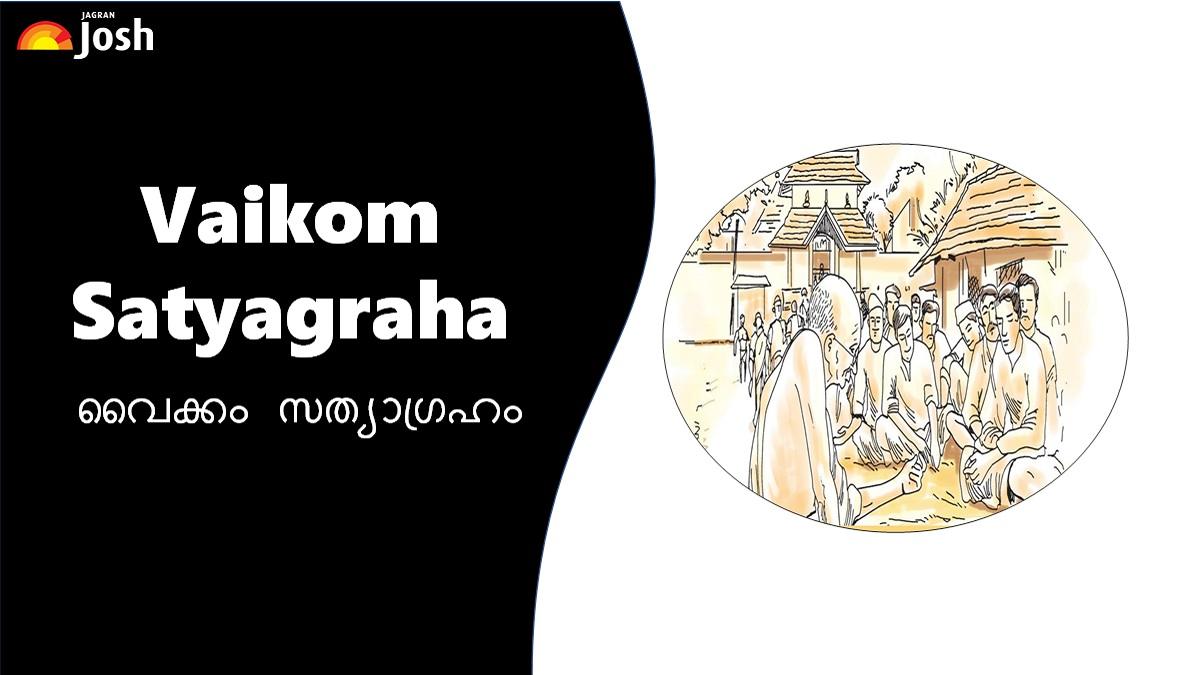Jagran Josh
The Vaikom Satyagraha was a movement against the ban imposed on the depressed classes in the surroundings of Vaikom Mahadevar temple. Check the complete details here to prepare for the UPSC exams.

Get All Details About Vaikom Satyagraha Here.
Vaikom Satyagraha UPSC: Kerala Chief Minister Pinarayi Vijayan and Tamil Nadu Chief Minister MK Stalin, on April 1, 2023, jointly inaugurated the centenary celebrations of Vaikom Satyagraha. The Vaikom Satyagraha was a movement against the ban imposed on the depressed classes in the surroundings of Vaikom Mahadevar temple. These included a restriction not only on movement on the roads surrounding temples but also a ban on their temple entry.
Vaikom Satyagraha UPSC is one of the crucial topics for the IAS exam. Some of the aspects to be covered from this topic for the prelims exam include leaders of Vaikom satyagraha, and factors leading to satyagraha. On the other hand, some of the important topics covered for the main exam include the significance and role of women in Vaikom satyagraha.
In this article, we have shared the complete details of the Vaikom Satyagraha including its history, significance, and much more.
What is Vaikom Satyagraha?
The Vaikom Satyagraha began on March 30, 1924, against the restriction imposed on lower caste and backward class individuals in the surroundings of Vaikom Mahadevar Temple. Let’s discuss all the aspects of the Vaikom Satyagraha UPSC in detail below:
Background of Vaikom Satyagraha
- The princely state of Travancore was known as the rigid, aggressive, and harsh system of custom-ridden government. Some of the unbending and ruthless social rules and customs were witnessed in Travancore.
- Individuals who belonged to lower castes like the Ezhavas and Pulayas were prohibited and various rules were imposed to keep them away from upper castes.
- They were not allowed to enter the temple or even walk on the roads surrounding the temples.
- In 1923, Madhavan raised the issue citing the prohibition imposed on the depressed caste people at the Kakinada meeting of the All India Congress Committee. Furthermore, the issue was picked up by the Congress Untouchability Committee established by the Kerala Pradesh Congress Committee in the month of January 1924.
- In Kerala, a committee was formed consisting of individuals from different castes to fight against untouchability.
- The committee was headed by K Kelappan with the members like T K Madhavan, K Neelakantan Namboothiri, Velayudha Menon, and TR Krishnaswami Iyer.
Factors Leading to Vaikom Satyagraha
- With the support of the East India Company, the Christian missionaries expanded their reach and various lower caste people converted to Christianity to escape the social norms imposed upon them.
- Maharaja Ayilyam Thirunal conducted various progressive reforms.
- With this, the modern education system was introduced which included free primary education for all people including lower castes as well.
Vaikom Satyagraha Movement-Beginning
- The movement commenced on March 30, 1924, when the Satyagrahis walked in a parade toward the prohibited public roads. Around 50 yards away from the Vaikom Mahadeva temple, there was a board that restricted lower caste people from walking on the roads (surrounding the temple).
- The police denied entry. However, three men sat on the road to protest against the same and were arrested.
- The Satyagrahis created batches of three volunteers from three different communities and use to walk on the banned roads every day and all the leaders of the movement were arrested within a week.
- Gandhiji reached Vaikom on March 1925 and had discussions with leaders of numerous caste groups and also had a meeting with the Maharani Regent at her Varkala camp.
- On November 30, 1925, the Vaikom Satyagraha was officially withdrawn after Gandhiji and W.H. Pitt reached an agreement.
- There was an agreement that included the release of all prisoners and providing access to roads.
- In 1936, the Maharaja of Travancore signed the historic Temple Entry Proclamation which eliminated the prohibition on the entry of temples.
Significance of Vaikom Satyagraha
- For the first time, a movement was held on such a big scale to protect the basic rights of the untouchables and other lower-caste people in Kerala.
- This movement witnessed the participation of women on a large scale which lead to their entry into the socio-political consciousness of the nation.
- The movement used the Gandhian approach of nonviolent protest in Travancore for the first time.
- The movement lasted around 600 days without any break which included social pressure, police interference, and even natural disasters in 1924.
FAQ
Who started Vaikom Satyagraha?
In 1924, K.P. Kesava Menon was lead by Vaikom Satyagraha in Kerala. The demand was to allow the entry of untouchables into the temple. The movement was supported by Mahatma Gandhi.
What were the objectives?
The Vaikom Satyagraha was a movement against the ban imposed on the depressed classes in the surroundings of Vaikom Mahadevar temple. These included a restriction not only on movement on the roads surrounding temples but also a ban on their temple entry.
Who played a dominant role in Vaikom Satyagraha?
Mahatma Gandhi supported the movement that was headed by prominent Congress leaders like K Kelappan, TK Madhavan, and KP Kesava Menon.
Where was the Vaikom Satyagraha 1924 25 conducted?
On March 30, 1924, the non-violent Satyagraha was started in the temple town of Vaikom in Travancore which lead to the commencement of “temple entry movements” across the country.
Take Free Online UPSC Prelims 2022 Mock Test
#Vaikom #Satyagraha #Significance #Year #Leader #Importance

